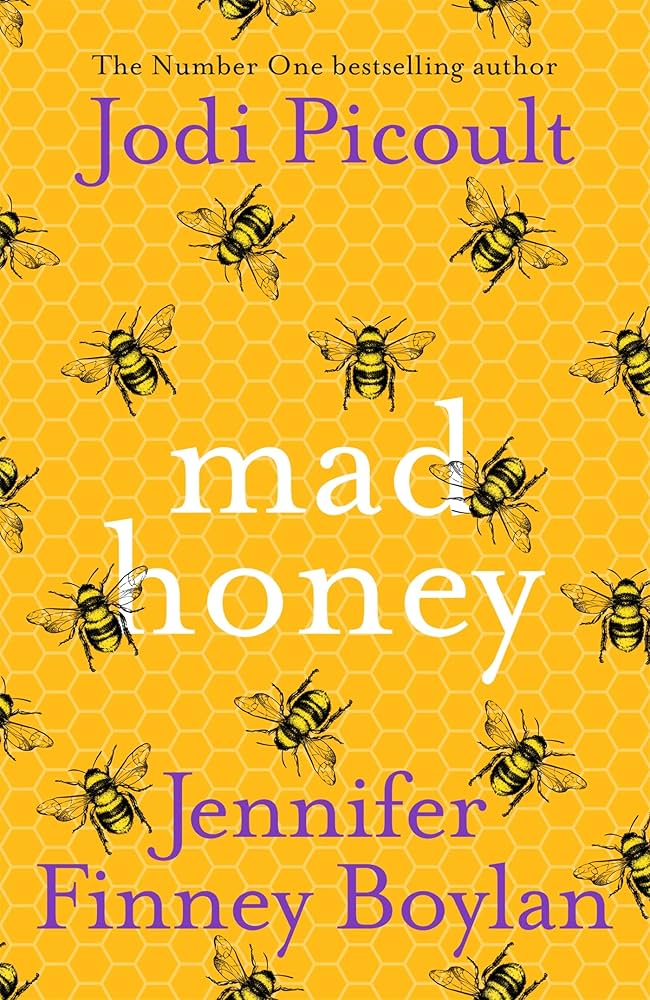
Mad Honey
Lily 8
by Picoult, JodiThe chapter opens with Lily, a transgender student, observing the dynamics in the girls’ locker room at Adams High. She contrasts the modest, self-conscious behavior of most girls with the confident display of Mackenzie LaVerdiere and her friends, who admire Mackenzie’s new tattoo. Lily reflects on her unique perspective as a trans person, noting the envy and insecurity she observes in others, both in the locker room and her past experiences in men’s spaces. The scene highlights themes of body image, gender identity, and the social hierarchies among teenagers.
Later, Lily walks through town, contemplating her gratitude for her trans identity, despite past struggles with self-acceptance. She recalls moments of despair, mirroring the self-loathing she overheard from a classmate in the locker room. Sitting by the river, she reads William Blake’s “The Sick Rose,” which moves her to tears. The poem’s themes of hidden corruption and destructive love resonate deeply with her, especially after a classroom discussion where her teacher, Chopper, challenges students to explore their emotional responses to the text.
The chapter also delves into Lily’s school environment, where Chopper’s unconventional teaching methods foster introspection. A student’s crude interpretation of the poem leads to his dismissal, while another student’s poignant observation about love causing harm sparks a reflective silence. Chopper’s wisdom about the cyclical nature of heartbreak and healing leaves a lasting impression on Lily, underscoring the chapter’s exploration of vulnerability and resilience.
Finally, the chapter touches on the Rainbow Alliance, an LGBTQ student group at Adams High, during a Morning Meeting presentation. Finn and Caeden, the group’s leaders, introduce their initiatives for the year, emphasizing inclusivity. This segment reinforces the chapter’s focus on identity and community, as Lily navigates her place in a world that is both affirming and challenging for trans individuals. The chapter ends on a note of connection, hinting at the ongoing journey of self-discovery and belonging.
FAQs
1. How does Lily describe the differences between the men’s and women’s locker room experiences, and what deeper observations does she make about body image?
Answer:
Lily contrasts the men’s locker room—where boys casually moved naked while shaving or talking—with the women’s locker room, where most girls are more modest, turning away while changing. She notes the confident “confederacy” of Mackenzie’s soccer team, who display pride in their bodies, while others observe them with envy, feeling “less than.” This mirrors her earlier observations of nerdy boys envying muscular peers in men’s locker rooms. Lily reflects on the unique perspective her trans identity affords, recognizing both the alienation (“Somebody kill me now”) and eventual gratitude for her dual experiences (pages 353–354).2. Analyze the significance of William Blake’s poem “The Sick Rose” in this chapter. How does it connect to Lily’s emotional state and the classroom discussion?
Answer:
Blake’s poem—about a rose destroyed by a worm’s “dark secret love”—triggers Lily’s sudden tears, suggesting parallels to her own life. The classroom discussion reveals layered interpretations: Dirk crudely reduces it to an STD, while a classmate sees it as a metaphor for toxic relationships. Chopper’s framing (“love makes people sick… yet we keep seeking it”) resonates with Lily’s history of pain and self-rejection (“I remember… thinking, Somebody kill me now”). The poem’s themes of hidden corruption and lost innocence mirror Lily’s struggles with identity and acceptance (pages 354–355).3. How does the Rainbow Alliance presentation at Morning Meeting reflect the broader themes of identity and belonging in the chapter?
Answer:
The Rainbow Alliance, led by Finn (nonbinary) and Caeden (trans), symbolizes the visibility and challenges of LGBTQ+ students at Adams High. Their introduction—announcing plans for the year—parallels Lily’s own journey toward self-acceptance. Finn’s gender subversion and Caeden’s beard (from testosterone) contrast with Lily’s earlier isolation, showing a spectrum of queer experiences. This scene underscores the chapter’s exploration of identity, community, and the tension between conformity (”screw her! It’s my body!”) and belonging (pages 355–356, truncated).
Quotes
1. “She told me I couldn’t get one until I’m eighteen, but screw her! It’s my body!”
This quote from Mackenzie LaVerdiere captures the rebellious spirit and bodily autonomy themes in the chapter. It introduces the tension between parental authority and personal freedom that contrasts with Lily’s more reflective perspective on bodily identity.
2. “I see other girls on the outside of their circle casting looks at them, wondering what it must be like, to feel in your nakedness only a sense of pride and command, rather than a sense of somehow being less than.”
This poignant observation highlights Lily’s unique perspective as a trans individual, contrasting the confidence of some girls with the insecurity of others. It reflects the chapter’s exploration of body image and self-perception across gender experiences.
3. “In a way, it’s a gift, being trans, and there are moments—like now, walking through this pretty town on a late summer evening—when I am willing to say, Sure, I’m grateful for it all.”
This represents a key moment of acceptance and appreciation in Lily’s journey. The quote captures the complex duality of her experience - the challenges of being trans alongside the unique perspective it affords.
4. “Until Dirk raised his hand and said, She’s got an STD! […] Chopper pointed to the door. ‘Out,’ he said.”
This classroom exchange demonstrates both the crude misunderstandings students can have about poetry (and by extension, complex human experiences), and Chopper’s no-nonsense approach to fostering meaningful discussion. It sets up the deeper exploration of love’s complexities that follows.
5. “But we keep on looking for it, day after day. Getting our hearts broken. And getting them healed again.”
Chopper’s profound reflection on love’s cyclical nature serves as a thematic anchor for the chapter. This quote resonates with Lily’s personal journey and the broader human experience of vulnerability and resilience in relationships.
